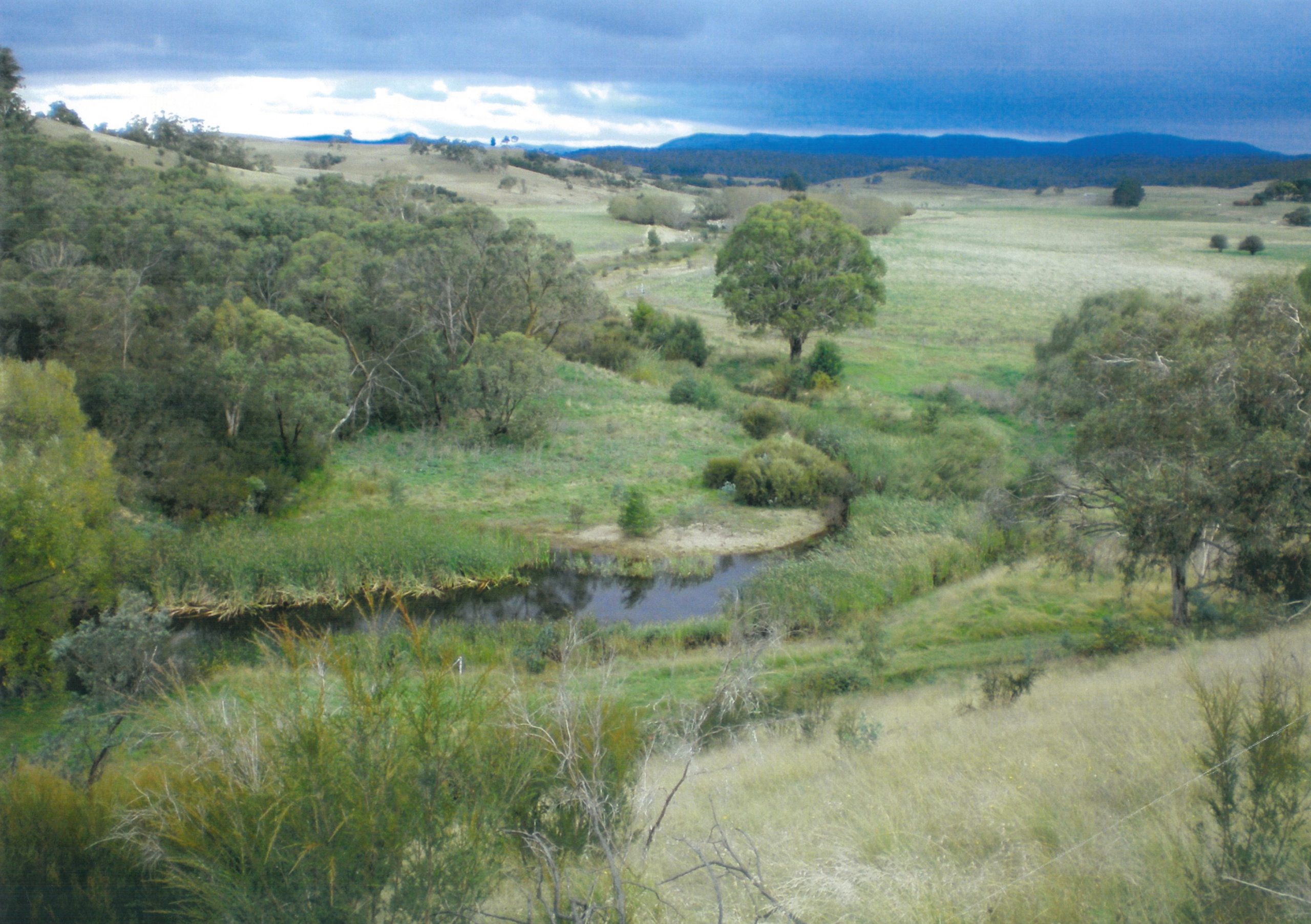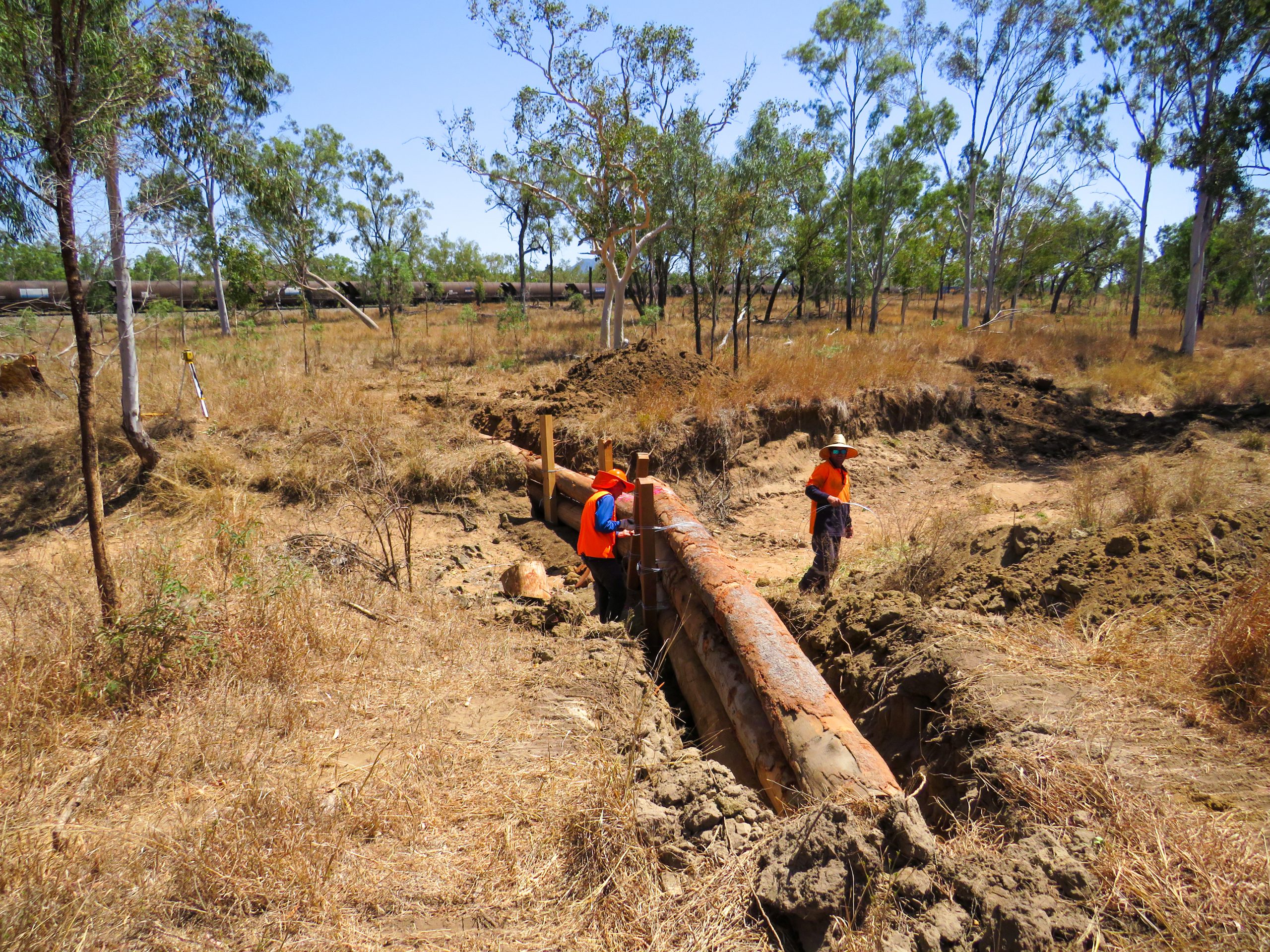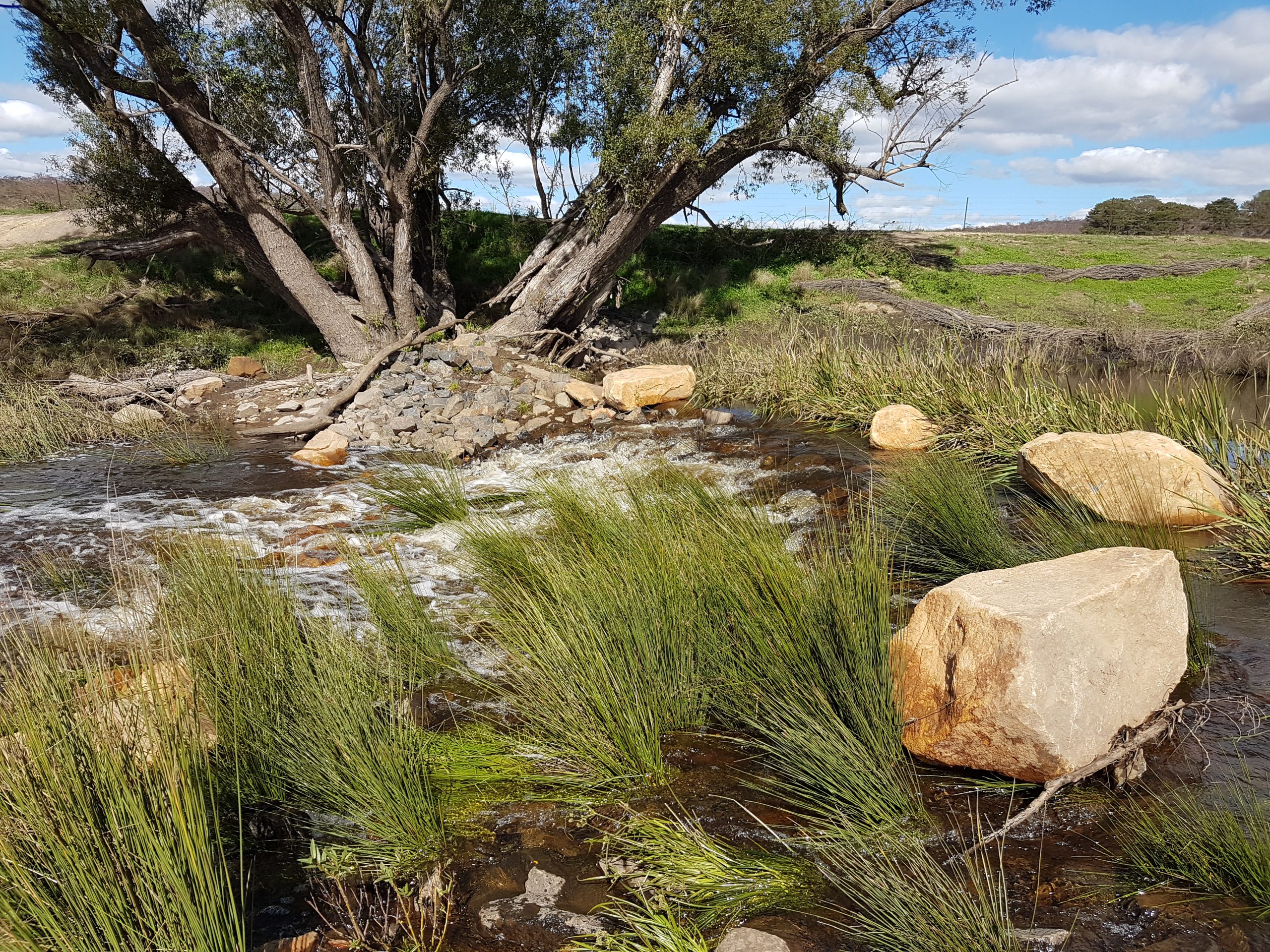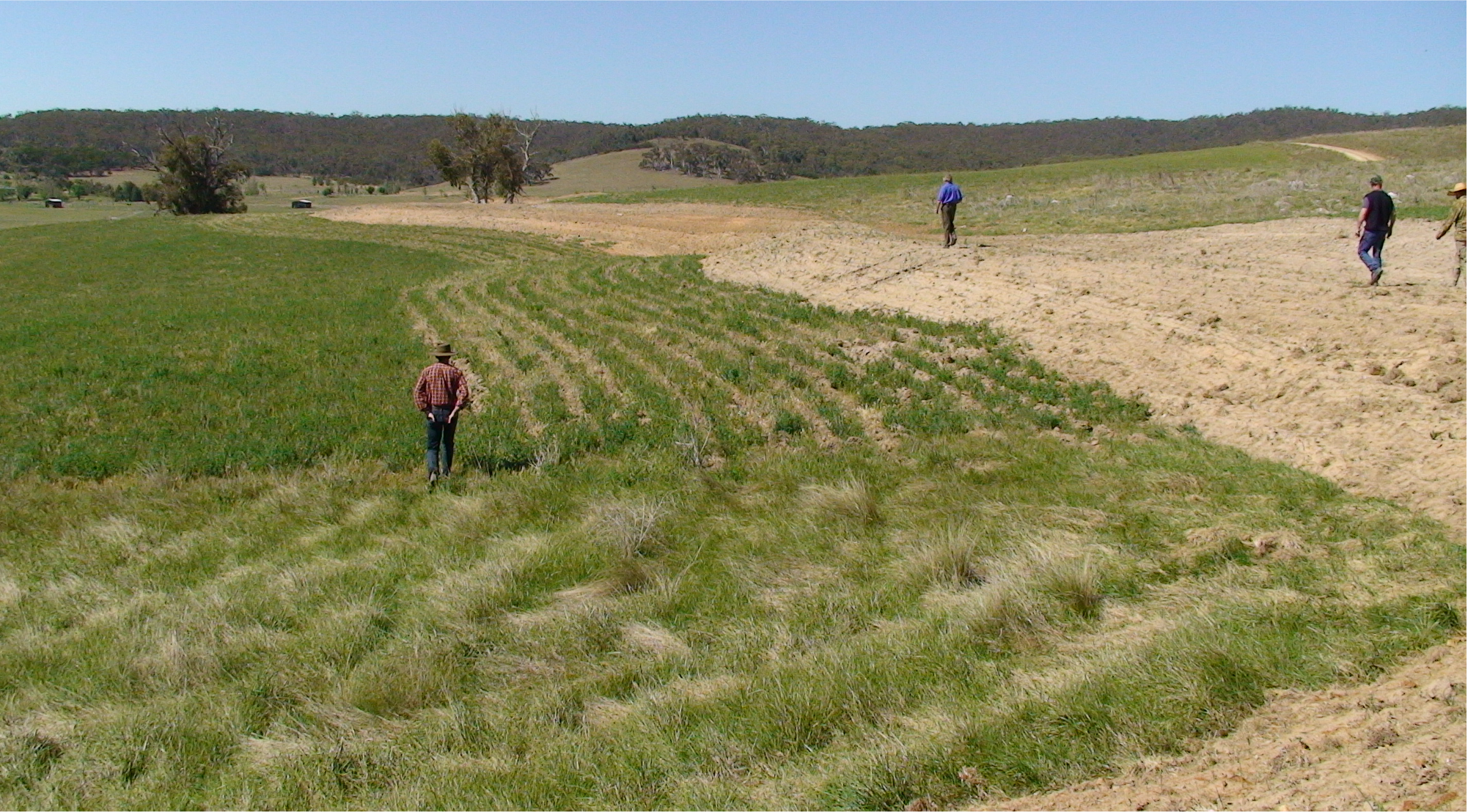Introduction
The Mulloon Rehydration Initiative is a catchment-scale project that is rebuilding the natural landscape function of the Mulloon catchment and boosting its resilience to climatic extremes for more reliable stream flows, improved ecosystem functioning and enhanced agricultural productivity. It includes development and implementation of a comprehensive Integrated Monitoring Plan.
The Mulloon Rehydration Initiative is a model for landscape scale repair across Australia which has led to increased productivity, biodiversity and soil fertility and soil organic carbon, improved water quality and quantity and resilience to climatic extremes. The results of the project reflect healthier landscapes and the production of high quality, nutrient dense food.
LocationSouthern Tablelands, NSW
Size23,000 HA
Participants23 Landholders
The Challenge
At Mulloon Creek, widespread land degradation had been caused by nearly 200 years of European land use, including agriculture, forestry and mining. The deep and chronic erosion of creeks and gullies has lowered the water-table, dried up wetlands and dramatically reduced the water holding capacity of the soils. Just like pulling the plug out of a bathtub.
Chronic erosion of creeks and gullies
Reduced water holding capacity

Westview Farm, 2015
The Opportunity
Mulloon Institute is working in partnership with the Mulloon catchment community to reverse these threats, through catchment-scale rehydration of the waterway and recreation of habitat through revegetating aquatic and terrestrial areas. This is building whole landscape resilience due to increased and prolonged water and moisture levels, preventing future environmental damage, improving biodiversity and restoring and protecting habitat. Improved ecosystem function also improves soil health, as well as ground and surface water quality and availability through the filtering of sediments and recycling of nutrients.
Increased soil moisture combined with managed grazing approaches can increase soil carbon levels. This combined with the reinstatement of wetlands – traditional carbon sinks – can assist in sequestering carbon from the atmosphere and so contribute to addressing the global challenge of climate change.
Increased soil moisture and grazing quality
Improved biodiversity and habitat
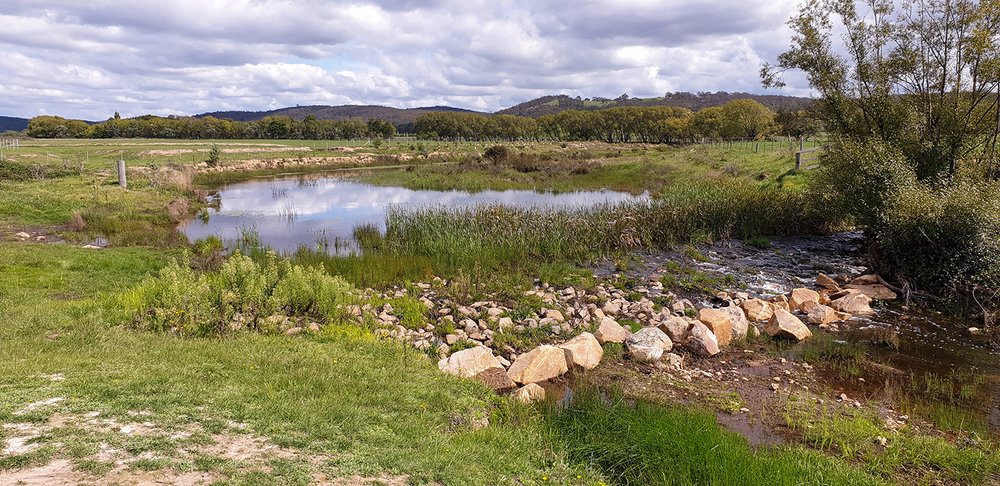
Westview Farm, 2020
Grazing Management Workshop
Bringing the community along
Catchment-scale projects are inherently social projects that begin with the education and capacity building of communities on the process of landscape rehydration and associated regenerative land management approaches. The Mulloon Rehydration Initiative has developed a ‘bringing the community along’ approach to ensure that all stakeholders, including landholders, regulators, researchers and the broader community, can engage with the project.
Baseline Studies
Mulloon Institute and its partners have undertaken a suite of biophysical, social and economic baseline studies within the catchment. The overarching integrated monitoring plan will enables the impacts of the restoration and rehabilitation work to be monitored in the long-term and demonstrate the crucial link between environmental, social and economic aspects of landscape repair. This valuable research will is being shared publicly and this project is a model of implementation in order to facilitate similar projects across Australia.
Scientific baseline surveys were conducted prior to the Mulloon Rehydration Initiative being implemented to monitor the project’s impact on Mulloon Creek and the surrounding catchment. Ongoing monitoring is also being conducted during the project to monitor changes.

Dr Dan Starrs from the Australian National University helping conduct the fish survey.
Threatened Species
The Mulloon Rehydration Initiative demonstrates the benefits of landscape scale repair and restoration works that have resulted in the sustained baseflow of Mulloon Creek. The waterway now has increased water quality and restored spongy wet floodplains which are more productive and provide valuable habitat for threatened and vulnerable species, including the Scarlet Robin, Diamond Firetail, and Dusky Wood Swallow. The project area forms a critical biodiversity corridor by connecting the Tallaganda National Park with the protected State Reserve of the Mid-Shoalhaven Water Catchment.
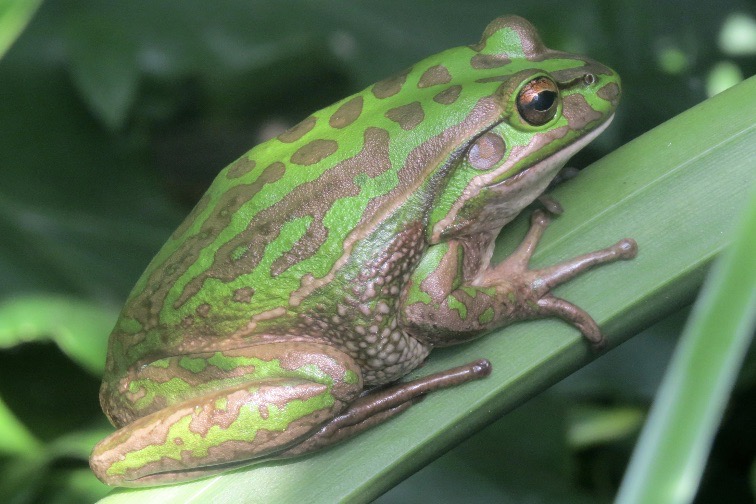
Frog image
Case Studies
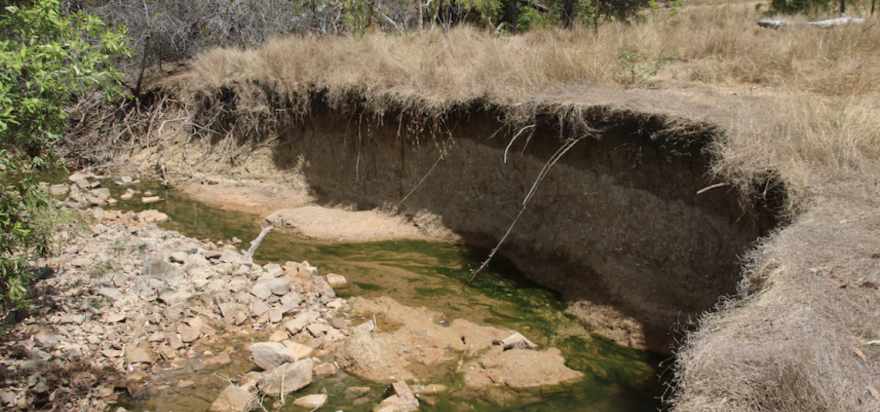
David
Small lifestyle property managed for wildlife habitat and conservation. The area has a history of grazing which has caused widespread degradation and...
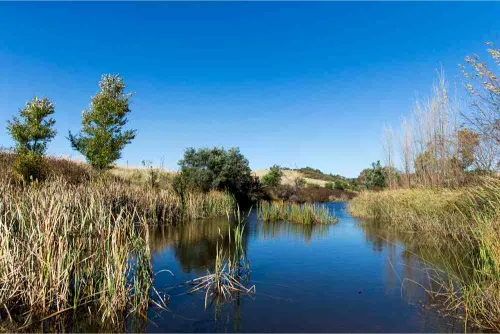
Mulloon Rehydration Initative
This catchment-scale project that aims to rebuild the natural landscape function of the Mulloon catchment and boost its resilience to climatic extremes...
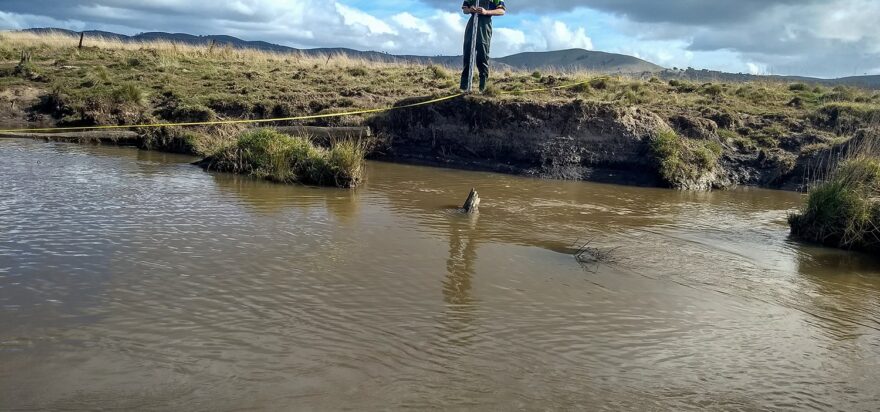
Teal
A severely degraded property due to more than 100 years of set stocking sheep, coupled with sodic soils, low ground cover and dramatic...
Project Development
The Future
The Mulloon Rehydration Initiative is a long-term, catchment-wide project. It is a key focus for Mulloon Institute, which is coordinating activities for 23 landholders, ten government agencies, several local environmental groups and universities, as well as a wide community of interest spanning the country. This unique and collaborative community project is the only one of its kind in Australia and highlights the social nature of catchment scale projects, with a wide range of stakeholders involved. This project is a model that can be scaled up and rolled out across the nation to Rehydrate Australia.
Acknowledgements
Mulloon Institute has been recognised by the United Nations Sustainable Solutions Network as being one of five projects globally, as a demonstrator of sustainable, profitable and productive farming. The Mulloon Rehydration Initiative is jointly funded through Mulloon Institute and the Australian Government’s National Landcare Program and is supported by the NSW Government’s Environmental Trust.
